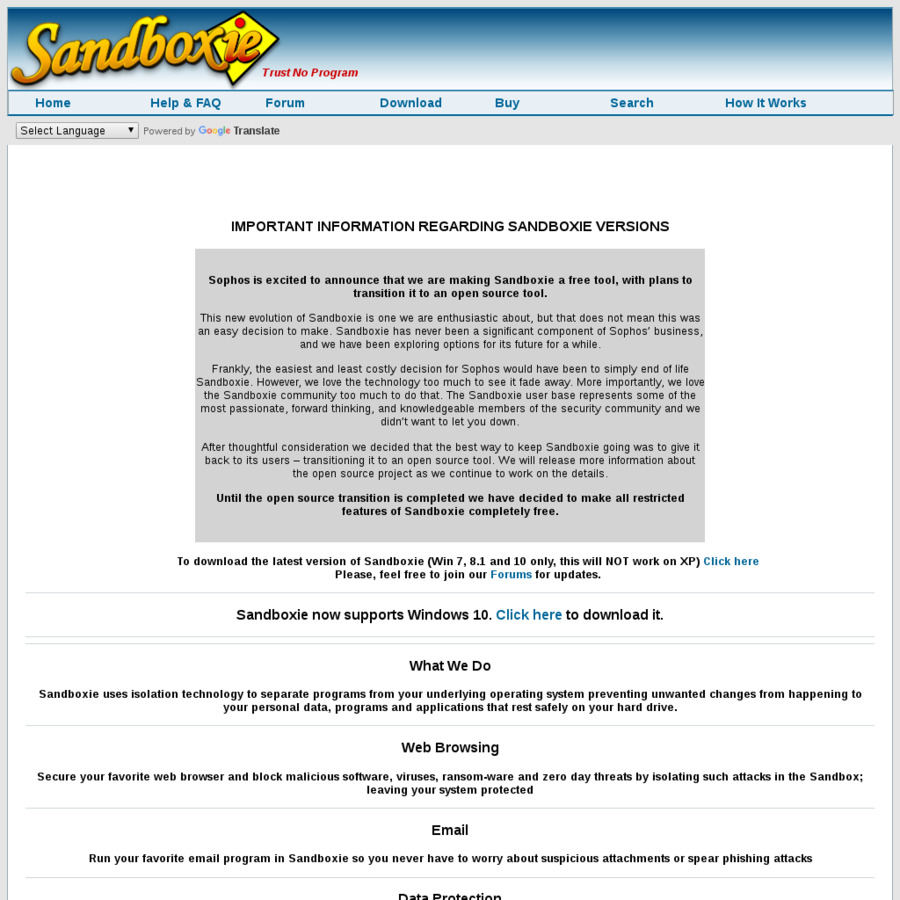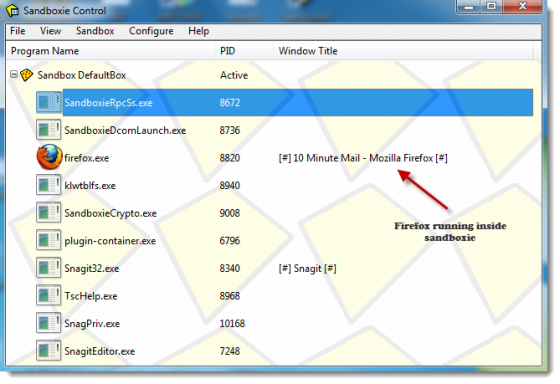

However, by careful configuration of the ClosedFilePath and ClosedKeyPath settings, you can achieve this goal as well.

It should be noted, however, that Sandboxie does not typically stop sandboxed programs from reading your sensitive data. In this way, drivers, and more importantly, rootkits, cannot be installed by a sandboxed program. It also prevents programs from asking a central system component, known as the Service Control Manager, to load drivers on their behalf. Sandboxie also prevents programs executing inside the sandbox from loading drivers directly. Sandboxie also takes measures to prevent programs executing inside the sandbox from hijacking non-sandboxed programs and using them as a vehicle to operate outside the sandbox. For some more information on this, see Sandbox Hierarchy. The following classes of system objects are supervised by Sandboxie: Files, Disk Devices, Registry Keys, Process and Thread objects, Driver objects, and objects used for Inter-process communication: Named Pipes and Mailbox Objects, Events, Mutexs (Mutants in NT speak), Semaphores, Sections and LPC Ports. Since Sandboxie integrates into the OS, it can do what it does without risk of being circumvented. Applications can never access hardware such as disk storage directly, they have to ask the OS to do it for them. sandboxie-docs is maintained by sandboxie-plus.Sandboxie extends the operating system (OS) with sandboxing capabilities by blending into it. Note that Sandboxie itself is not portable software, but it facilitates the portability of a large number of applications. Through the Sandboxie Start menu, you will see the menu shortcuts installed by the game, and when you start it, the game will find its settings as they were recorded in the sandboxed registry.

With the free version, at least when I tried it, you are limited to only one sandbox at a time. You can then carry the USB drive to another computer where Sandboxie is installed, and set the container folder on that other computer to drive P. The only negatives I found back when I used it, was the learning curve and remembering to use it at all. And any registry keys it creates will also be created in the Windows registry, also outside the USB device.īy contrast, if you set the container folder to drive P (for instance P:\Sandbox), then install the game into the (sandboxed) drive C, then all objects created by the installation will be redirected to drive P. The game may install its files to a folder on drive P, but any menu shortcuts it creates will be installed in the Windows Start menu of the local computer, outside drive P. By redirecting programs to create sandboxed objects which have a nonspecific path, it is possible to populate a sandbox on one computer, then carry this sandbox to another computer and keep using it.įor example, consider installing a game program to a portable device such as a USB memory stick which is mounted as drive P. The revised layout of the sandbox that is introduced in version 2.80 allows for greater portability of the sandbox across computers.


 0 kommentar(er)
0 kommentar(er)
